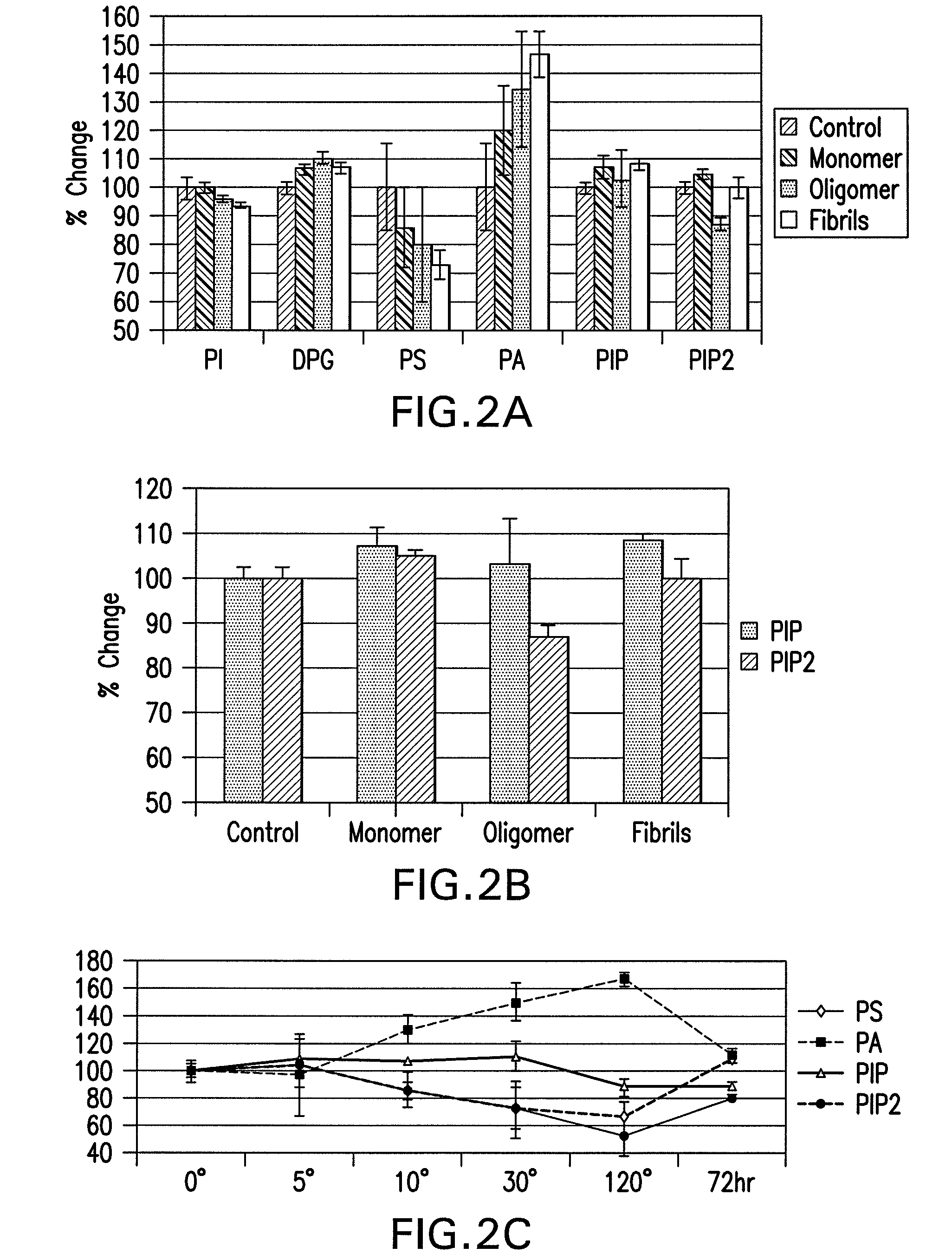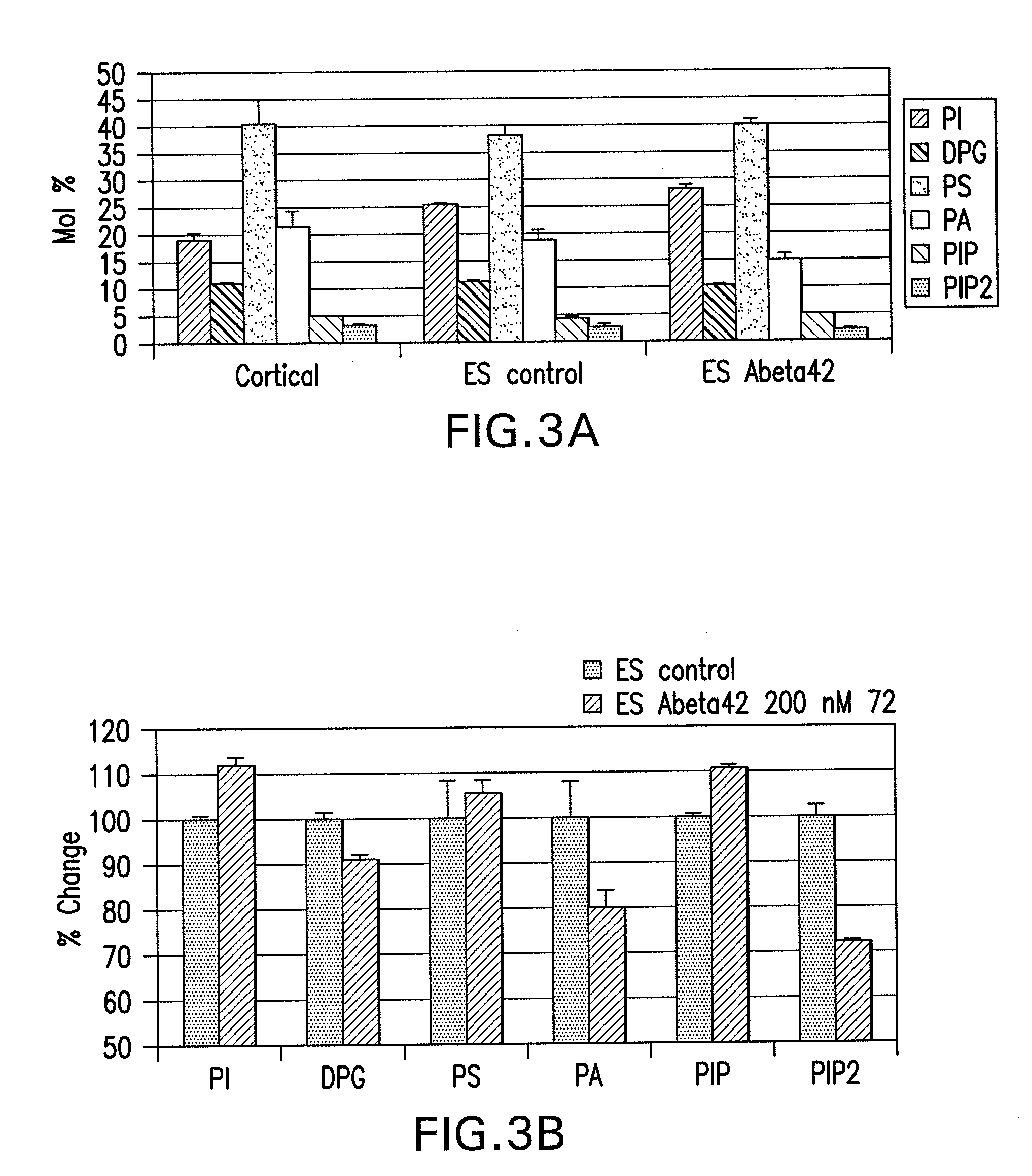Phosphoinositide modulation for the treatment of neurodegenerative diseases
a neurodegenerative disease and phosphoinositide technology, applied in the direction of peptide/protein ingredients, extracellular fluid disorder, metabolic disorder, etc., to achieve the effect of increasing pip2, increasing pip2, and increasing pip2
- Summary
- Abstract
- Description
- Claims
- Application Information
AI Technical Summary
Benefits of technology
Problems solved by technology
Method used
Image
Examples
Embodiment Construction
[0050]For clarity, and not by way of limitation, the detailed description of the invention is divided into the following subsections:
[0051](i) PI4-kinase agonists:
[0052](ii) TMEM55A / B inhibitors;
[0053](iii) PI(4)P5-kinase agonists;
[0054](iv) synaptojanin-1 inhibitors;
[0055](v) PI3-kinase inhibitors;
[0056](vi) ATM Kinase inhibitors;
[0057](vii) agents that decrease PA;
[0058](viii) assay to identify agents that change association of presenilin-1 with lipid rafts;
[0059](ix) agents that change association of presenilin-1 with lipid rafts;
[0060](x) assay to identify agents that increase PIP2 and inhibit Aβ42 toxicity;
[0061](xi) assay to identify inhibitors of synaptojanin-1;
[0062](xii) diagnostic methods;
[0063](xiii) methods of treatment; and
[0064](xiv) other methods.
5.1 PI4-Kinase Agonists
[0065]In non-limiting embodiments, the present invention provides for a method of inhibiting the adverse neuronal effects of Aβ42 comprising administering, to a neuron in need of such treatment, an amou...
PUM
| Property | Measurement | Unit |
|---|---|---|
| volume | aaaaa | aaaaa |
| temperature | aaaaa | aaaaa |
| volume | aaaaa | aaaaa |
Abstract
Description
Claims
Application Information
 Login to View More
Login to View More - R&D
- Intellectual Property
- Life Sciences
- Materials
- Tech Scout
- Unparalleled Data Quality
- Higher Quality Content
- 60% Fewer Hallucinations
Browse by: Latest US Patents, China's latest patents, Technical Efficacy Thesaurus, Application Domain, Technology Topic, Popular Technical Reports.
© 2025 PatSnap. All rights reserved.Legal|Privacy policy|Modern Slavery Act Transparency Statement|Sitemap|About US| Contact US: help@patsnap.com



